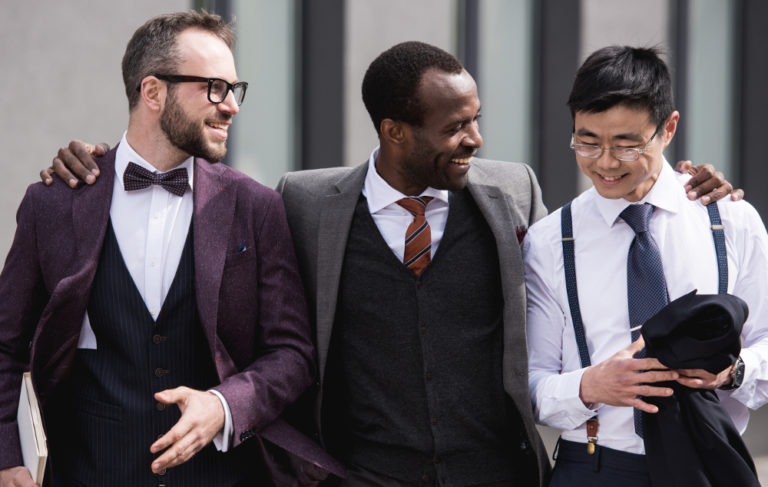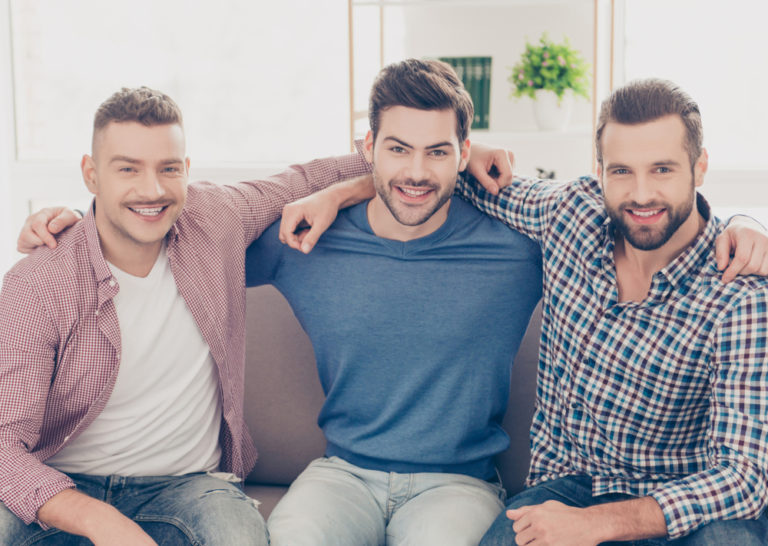 I’m currently writing three different stories about loving triads— three people in a committed relationship. Two are in Rainbow Briefs volume 2— the collection of YA short stories I’m releasing at the end of the month under my Kira Harp pen name. One of those is a triad of 17-year-old guys who are determined not to let the world tell them how to love. The other is an M/M/F triad set decades back, when coming out was not an option. In this second set of YA stories, along with main characters who are Ace and bisexual and non-binary, I wanted to include other versions of how love can play out, including poly.
I’m currently writing three different stories about loving triads— three people in a committed relationship. Two are in Rainbow Briefs volume 2— the collection of YA short stories I’m releasing at the end of the month under my Kira Harp pen name. One of those is a triad of 17-year-old guys who are determined not to let the world tell them how to love. The other is an M/M/F triad set decades back, when coming out was not an option. In this second set of YA stories, along with main characters who are Ace and bisexual and non-binary, I wanted to include other versions of how love can play out, including poly.
The other triad project is an edit and sequel section for Changes Coming Down – my novel about a cop, a rancher, and a hockey player who deal with a mystery while trying to figure out how their future will look. I got hooked on revising it, and now I’m researching the hockey info, so I can give readers a sequel with more of how Scott’s hockey career will play into their relationship, moving forward.
In all three, though, I’m writing balanced triads— three people whose love is mutual and equally important, where under pressure they’d be unable to say which of their partners is more important to them. The vast majority of romance is about a pair bond, but where it’s not, the most common poly is the one that I’m indulging in. Some readers don’t like any poly, but many, including me, find the idea of expanding love to a trio works beautifully. And in real life, I know of a couple of such triads whose relationships are solid and strong.
But at EuroPrideCon, we had a panel where members who are in poly relationships talked about how varied those can be. It was a good reminder that our stories can be a place where we expand the picture of how love looks. There are poly relationships that are not a triangle, but a line with three points, where one member loves each of the other two, but they don’t have a romance with each other, even though they may be good friends and share their lover happily. Or there may be a primary couple, and a third lover who is important but not as central, and who is okay with that. Or many other permutations of three or four or more people.
In romance books, those stories are hard to come by. We see them most often in the realm of BDSM— stories where the bonds between the members of the triad are shaped differently by their needs and desires. I think we’ve been learning that no two BDSM relationships look the same in what people need or get out of their time together. So perhaps we’re more ready to accept asymmetry in the romance too.
In Jane Davitt’s “Room at the Top,” two subs who love each other find a Dom who can handle them both, but the emotional connection becomes pretty trilateral. Heidi Cullinan’s “Santa Baby” shifts that balance, as three men work out permanent bonds that include different qualities not only of D/s, and SM, but also of the degree of romance and emotion between pairs. Another even more asymmetrical one is in Matthew J. Metzger’s “Sex in C Major” where characters who are aromantic and asexual, trans and cis, D and s, figure out a working triad (with some heavy angst and SM along the way.)
 To a degree, romance is about a fantasy of perfection. We want to see the members find a love that is solid and lasting and can’t be shaken or diminished. That works against any romance that says “not being equal is okay. A secondary love can be enough to last.” Our fairytale doesn’t allow for inequality.
To a degree, romance is about a fantasy of perfection. We want to see the members find a love that is solid and lasting and can’t be shaken or diminished. That works against any romance that says “not being equal is okay. A secondary love can be enough to last.” Our fairytale doesn’t allow for inequality.
I think, though, that it’s important for us to write and read and value stories like that. We should be able to look at a book and say “A relationship that makes all the members content and fulfilled is a successful one, whatever that looks like to outsiders.” In real life, I also know at least 3 poly relationships that are solid, but not equal, including a home where a bi guy loves both his gay husband and his straight girlfriend, and those two are happy emotionally together but don’t want each other in bed. And for all of them it works.
Right now, I’m still writing Changes as a balanced trio. Casey, Scott, and Will are not ever going to see themselves as less than an equilateral triangle, even if Will, as the latecomer, sometimes thinks he should back off to make things easier for the other two. I admit, I love the solidity of three men in love, without limits.
But maybe someday I’ll tackle something more uneven. And I’m definitely up for reading them, if you have some to suggest. When we say “love is love” and define it by the people inside the relationship getting what they need to be content, then this is one more dimension we can begin to open up and explore.
-Kaje Harper
Aug 2018

[…] Kaje Harper has an article here about gay romances that feature three or more people at Love Bytes […]